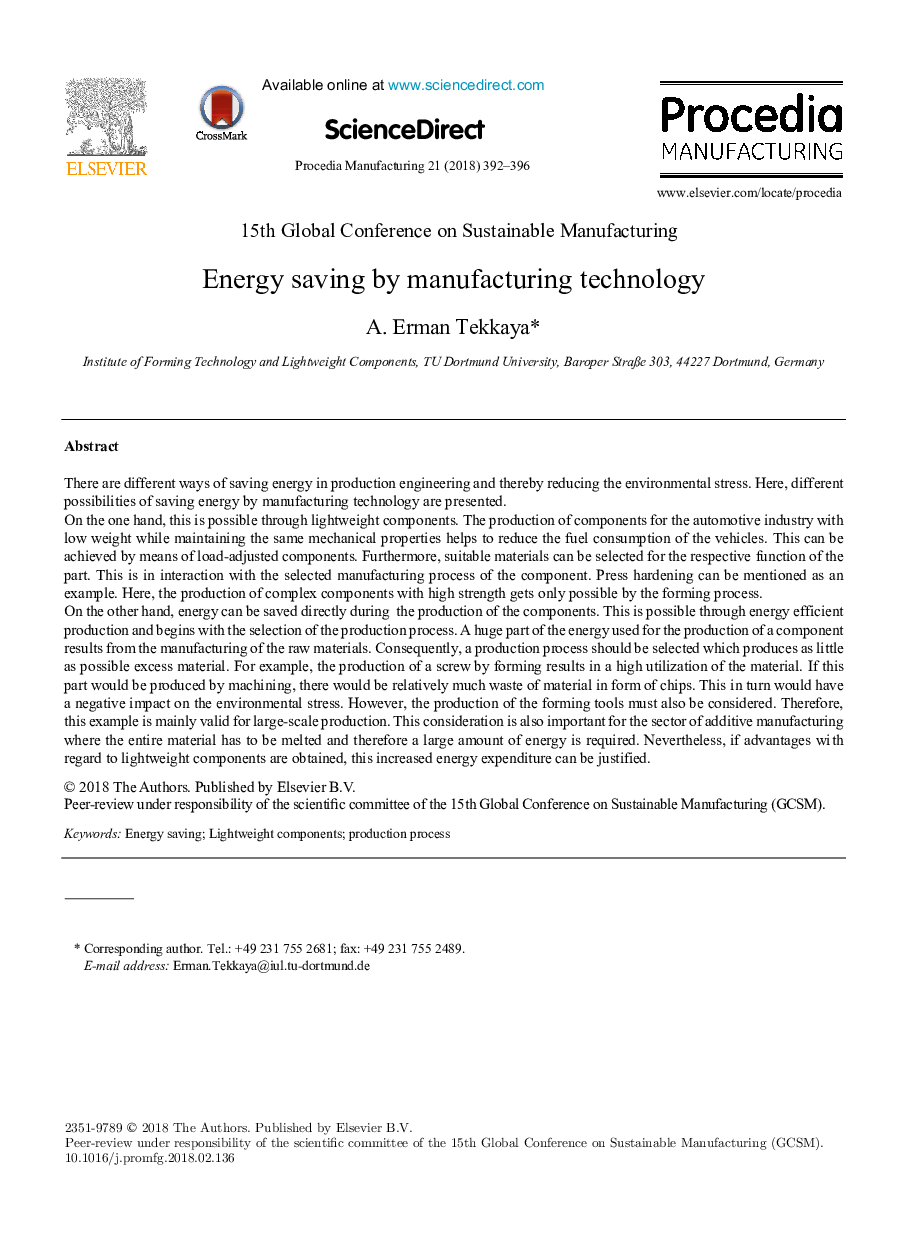| Article ID | Journal | Published Year | Pages | File Type |
|---|---|---|---|---|
| 7545225 | Procedia Manufacturing | 2018 | 5 Pages |
Abstract
On the other hand, energy can be saved directly during the production of the components. This is possible through energy efficient production and begins with the selection of the production process. A huge part of the energy used for the production of a component results from the manufacturing of the raw materials. Consequently, a production process should be selected which produces as little as possible excess material. For example, the production of a screw by forming results in a high utilization of the material. If this part would be produced by machining, there would be relatively much waste of material in form of chips. This in turn would have a negative impact on the environmental stress. However, the production of the forming tools must also be considered. Therefore, this example is mainly valid for large-scale production. This consideration is also important for the sector of additive manufacturing where the entire material has to be melted and therefore a large amount of energy is required. Nevertheless, if advantages with regard to lightweight components are obtained, this increased energy expenditure can be justified.
Keywords
Related Topics
Physical Sciences and Engineering
Engineering
Industrial and Manufacturing Engineering
Authors
A. Erman Tekkaya,
